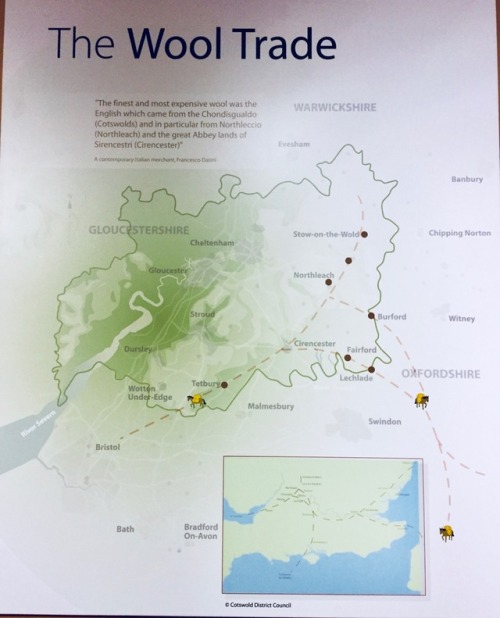#cirencester
Corinium Museum, Cirencester; Medieval Period
The Wool Trade (my notes)
The production of wool was enormously important to England for many centuries, and for the Cotswolds in particular. The climate and terrain of the area made it idea for rearing sheep, and the native sheep breeds were prized for their rich golden wool. Towns and villages grew up along the trade routes, merchants amassed large amounts of money which was spent on lavish houses, and grand “wool churches” were built on the proceeds. A great number of the herds were owned by the numbers of Abbeys established in the area, furthering the success of already growing power of the church. By the 1100s, 50% of the economy of the Cotswolds was based in the rearing of sheep for their wool, and by the 14th century this was true for the income for the entire country.
Cirencester sits at one of the major crossroads in a prime location for both moving wool and other goods to and from major ports, but also for transportation into the Stroud valleys, which still contain a huge concentration of textile mills.
The Cotswold Lion
Sheep have grazed on the Cotswold hills for more than 2000 years. The most famous breed was the Cotswold Lion, the producer of a long curly fleece which became famous throughout Europe. An ideal wool for dyeing, it became a favourite for spinning and weaving. Merchants grew rich and built many churches with their profits.
This fine example (in image 2) comes from a local flock by the name of Noent, his own name is Emperor. Kindly donated by Mr E Freeman.
Post link


